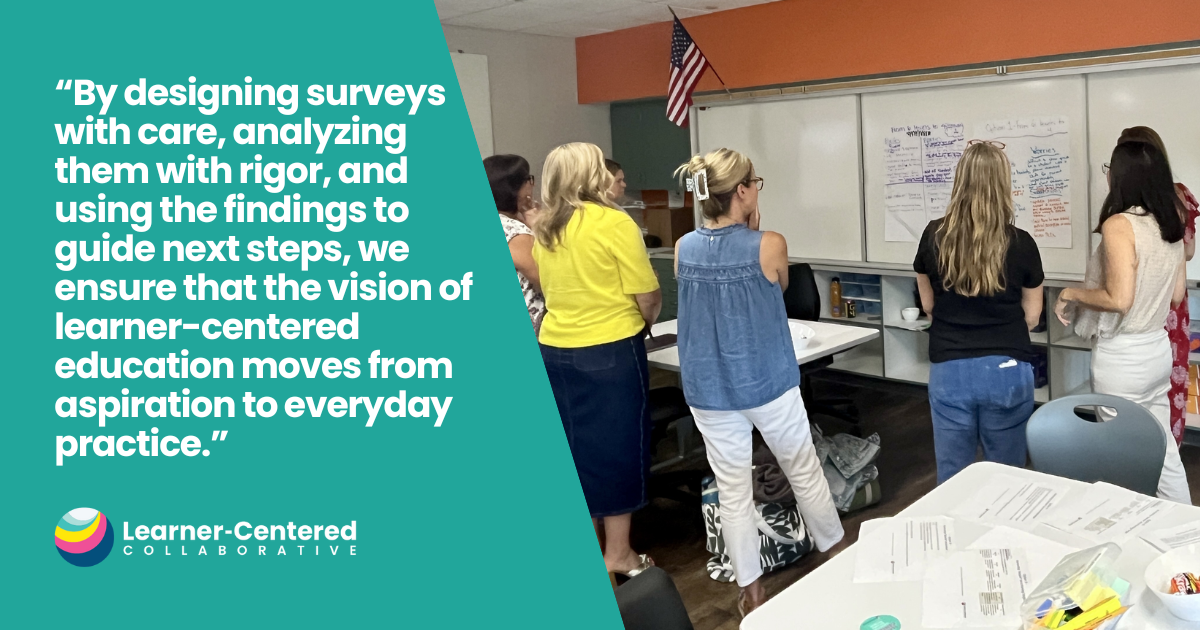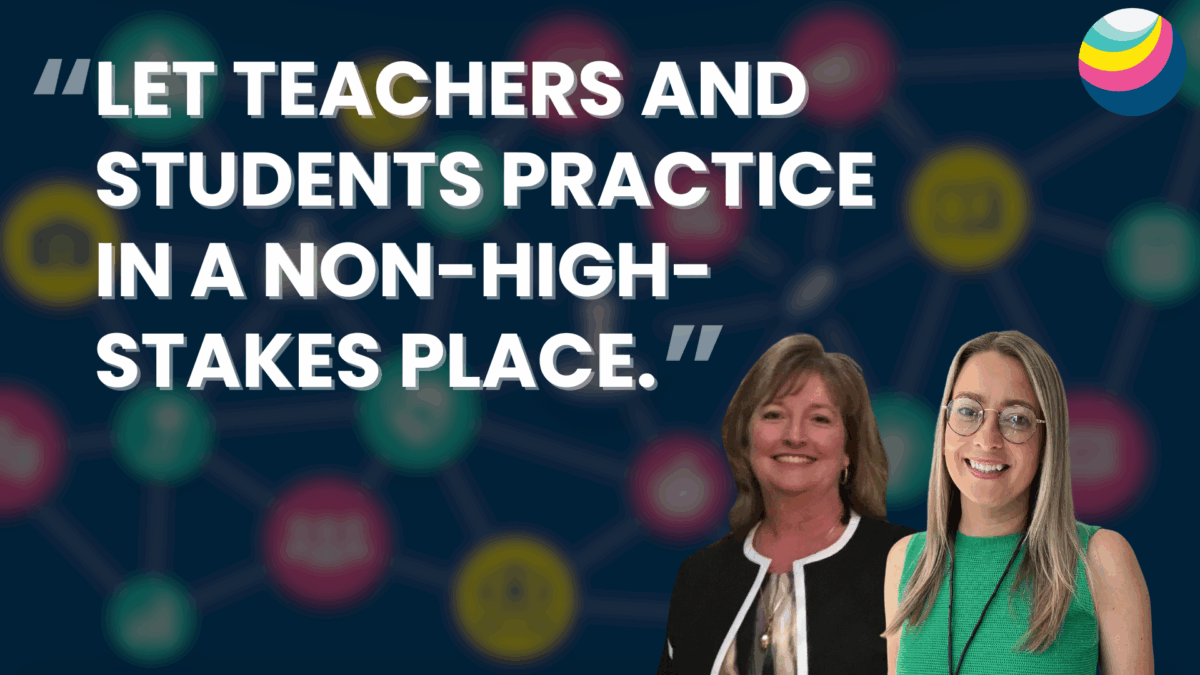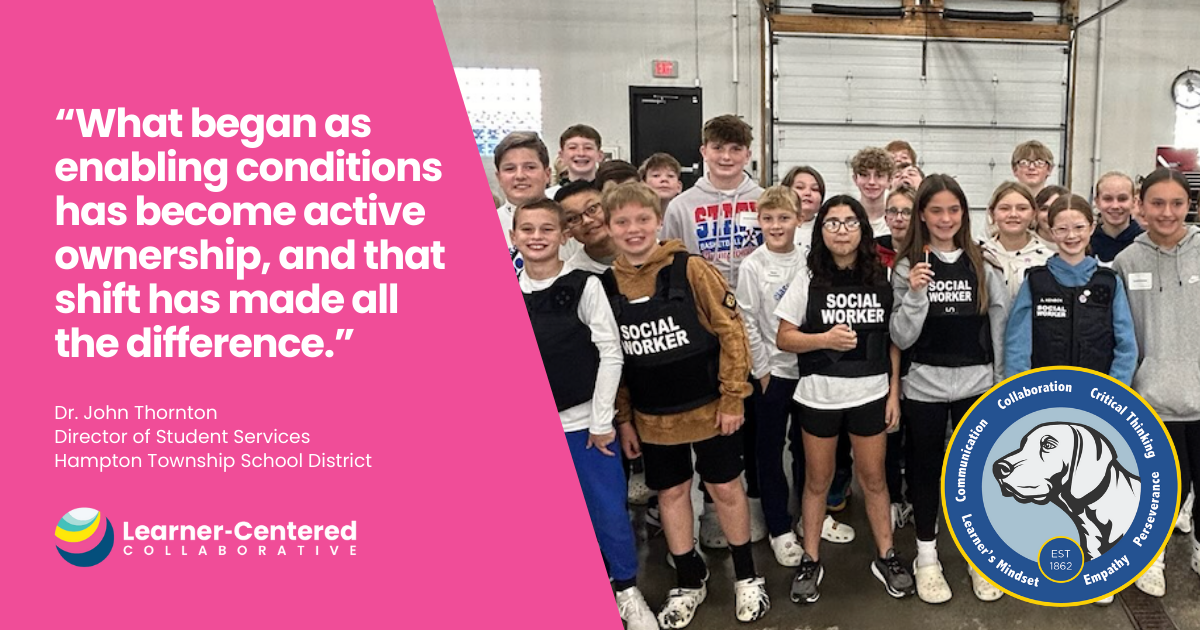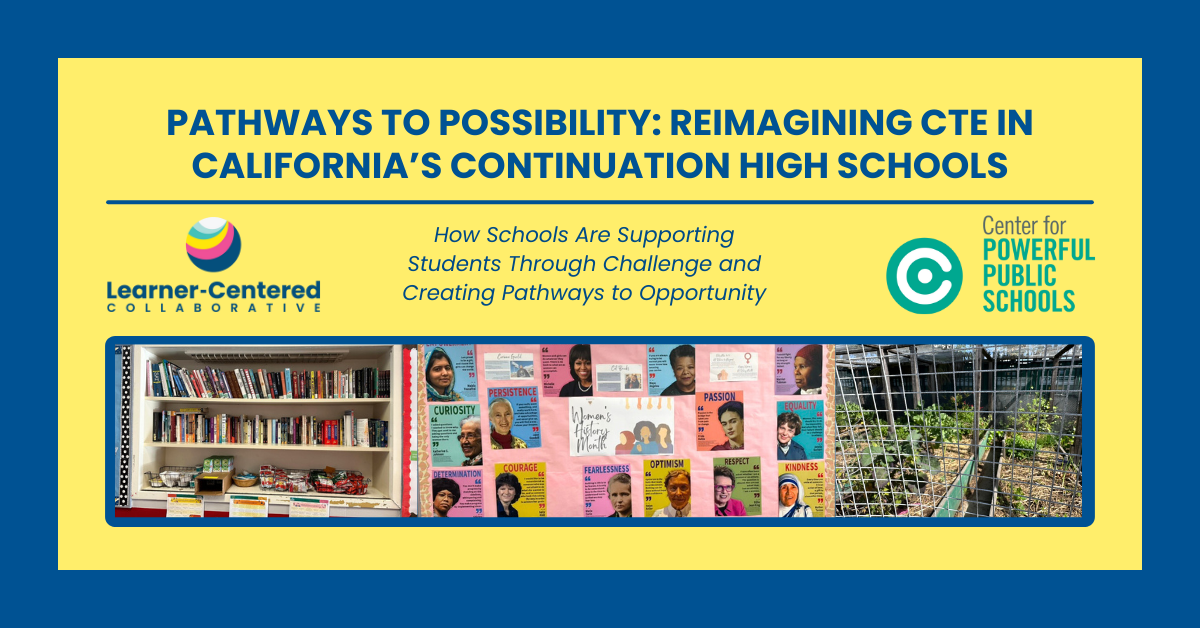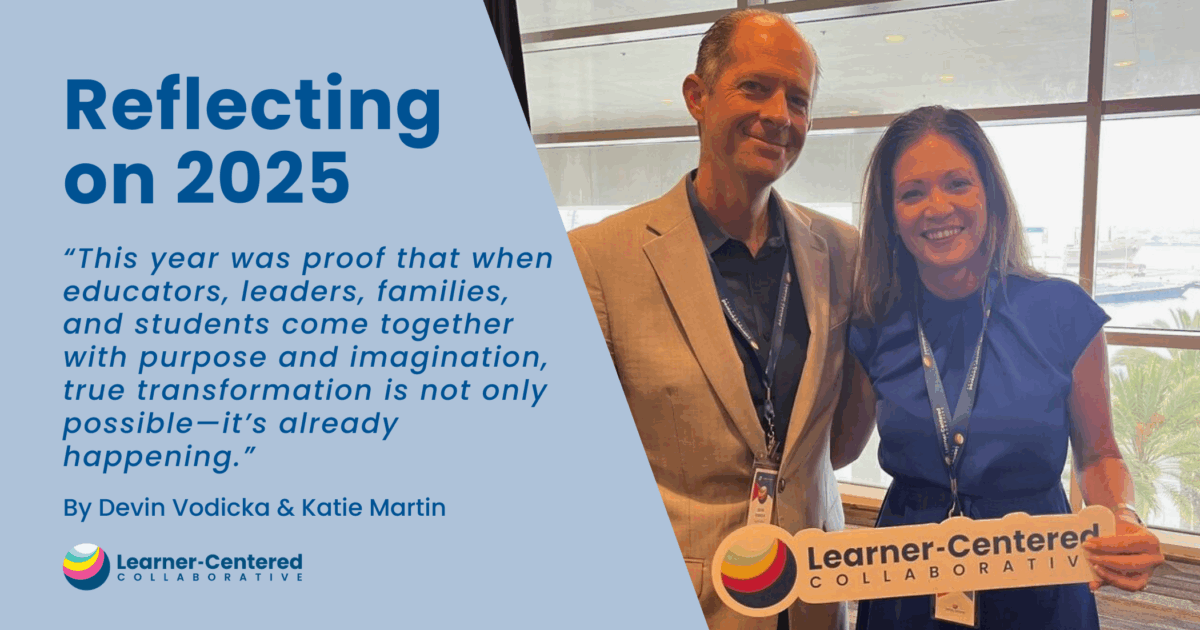12 Ways to Breathe Life into Your Portrait of a Learner
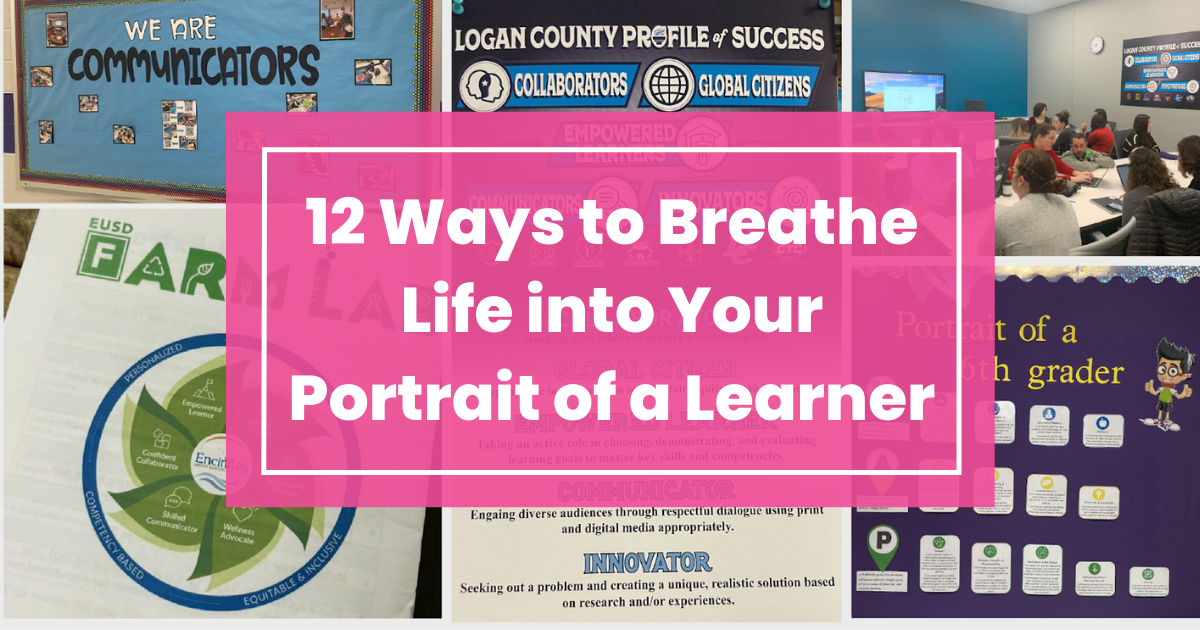
As the world evolves, the skills needed to thrive must go beyond narrow standards. Portraits of a Learner (also known as Portraits of a Graduate or Learner Profiles) are gaining popularity as they can help to expand the collective idea of success and elevate the essential competencies, along with foundational knowledge and content, for learners to thrive now and in their future.
At Learner-Centered Collaborative, we use the term “Portrait of a Learner” rather than “Portrait of a Graduate” because we believe that these competencies we want to develop in young people should be modeled, practiced, and grown by the adults in the system as well. It’s not just what we aspire to develop in young learners, but who we aspire to be as a community of learners.
When we work with many districts to cast a vision for their community, we help craft a unique graphic that visualizes their North Star and aligns with their vision for learners. It’s inspiring to see these visuals come together and watch communities share their hopes and dreams. However, the visualization is just the beginning, not the end.
We continue to see many creative ways to connect the community around their shared vision and breathe life into the Portrait of a Learner. We believe that the sequence matters to ensure it doesn’t become just another initiative, but rather a unifying vision that guides the practices, decisions, and policies.
Phase 1: Socialize the Portrait
The first step is to introduce your Portrait of a Learner to the entire community. This phase builds awareness and enthusiasm around the vision you’ve created. It’s crucial that all stakeholders have time to see the portrait, understand its components, and get excited about the desired outcomes. This exposure creates a shared language and common goals across the community.
Here are strategies to effectively socialize your Portrait:
1. Make the Portrait Visible: Put up posters, infuse the language in your daily conversations, and add it to your district website.

2. Create Videos: You can highlight the process of developing the framework, introduce the Portrait outcomes & share bright spots & voices from learners.
Check out these examples from Encinitas and Laguna Beach
3. Create a Website to share bright spots and examples of how learners are bringing the portrait to life. This could be shared with families, educators, and community members.
Check out these examples from Logan County, Hampton Township and Lamont Union School District.
4. Celebrate Learners: Use outcomes from the Portrait to highlight and celebrate learners who demonstrate these outcomes.

5. Create a Social Media Campaign: Post bright spots and introduce the different Portrait outcomes on social media.

Phase 2: Design for Learning
6. Develop Progressions of Learning: Create visible benchmarks of progress towards Portrait components across various grade levels.
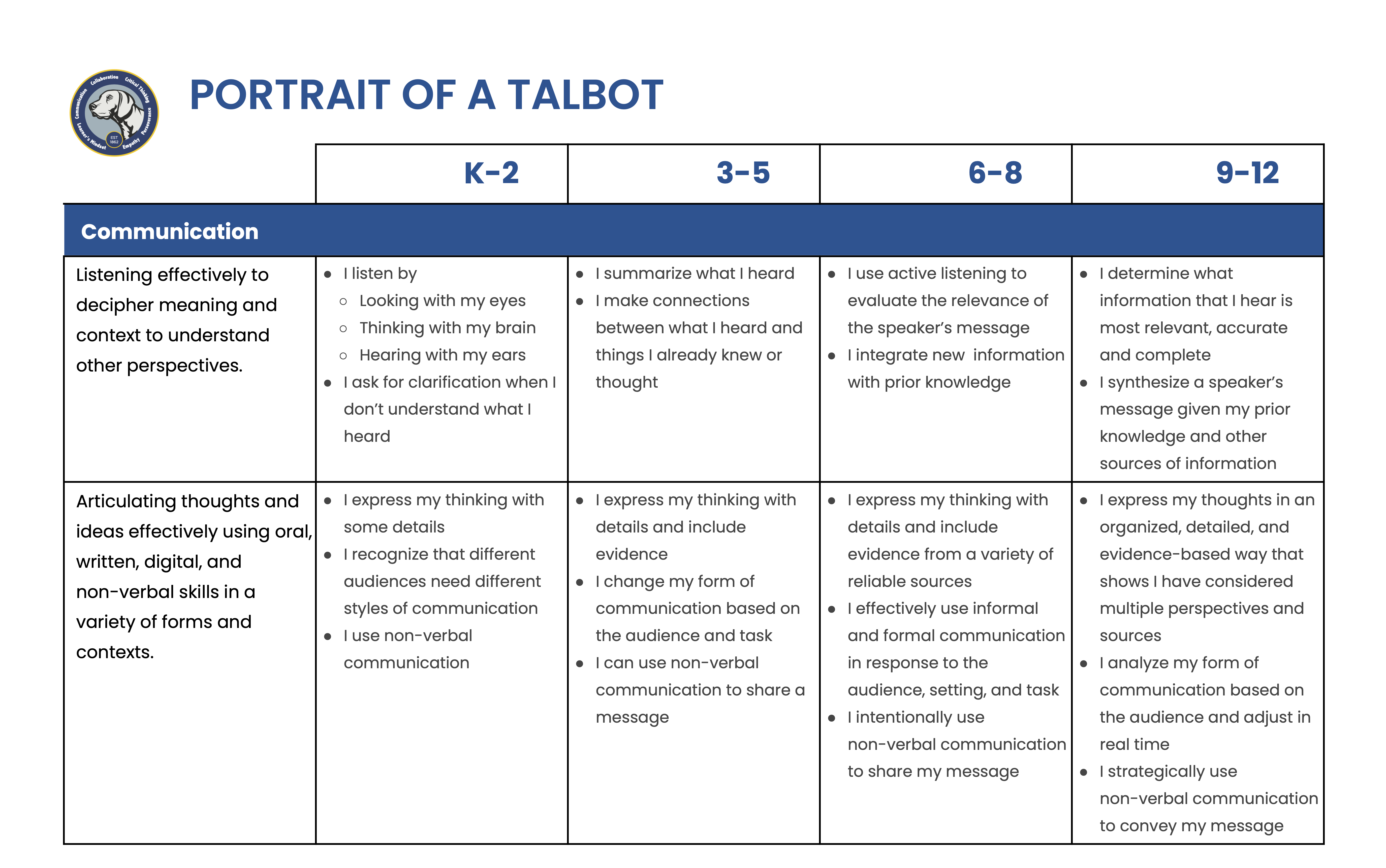
7. Have Learners Self Assess and Set Goals: Encourage learners to make meaning of the Portrait and self assess on the progressions, reflecting on how they demonstrate the Portrait outcomes.
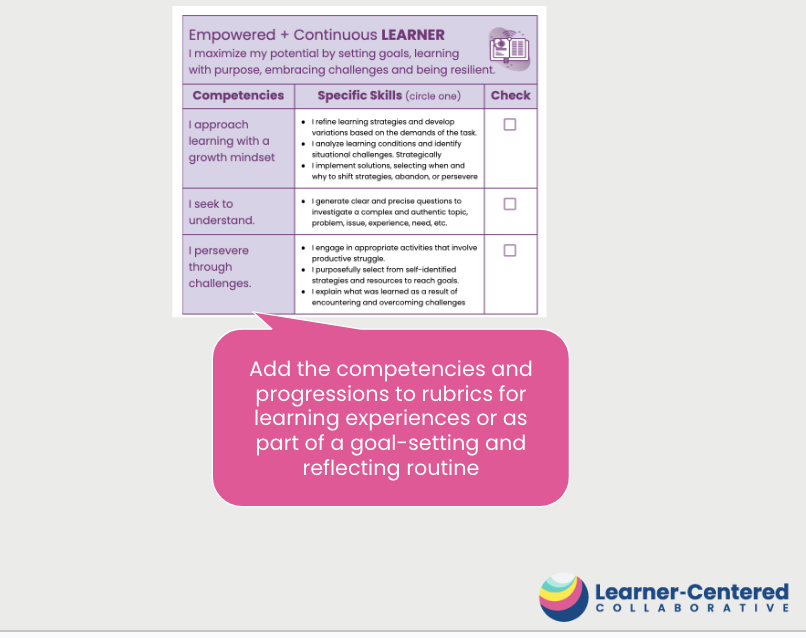
8. Conduct Learning Walks: Use the progressions to spot learners in action with the Portrait outcomes.

9. Design Experiences: Use the outcomes and progressions to design experiences aligned with your learner portrait

Phase 3: Demonstrate and Celebrate Growth
The final phase focuses on showcasing learner development aligned with the Portrait. This stage emphasizes innovative ways to demonstrate and celebrate student growth, moving beyond traditional assessment methods.
Here are three key strategies for sharing growth and evidence:
10. Progress Reports: Share evidence of growth in both academic and portrait outcomes/ competencies on report cards or progress reports.
Want to implement these innovative reporting strategies in your school or district? Our Competency-Based Reporting Playbook offers step-by-step guidance on creating progress reports, portfolios, and organizing learning defenses that align with your Portrait of a Learner. Read here.
11. Portfolios: Support learners to curate examples and reflect on their growth as a learner related to the learner portrait outcomes.

12. Defenses of Learning: Have students present their learning connected to the Portrait, using their portfolio.

From Vision to Reality
Wendy Fairon, Executive Director of CCDS shares her experience of implementing a Learner Profile:
“As we head into our 3rd year with our CCDS Learner Profile, it’s become so much more than posters around the school. From the intentional design by staff here at our school to revisions along the way, the work has made this a living, meaningful foundation for all we do. We highlight the Learner Profile in our weekly All School Morning Meeting, with students sharing examples of their growth. The shift from Graduate Profile to Learner Profile has also helped this come to life, as we connect as adults about our own growth toward achieving these outcomes in our team meetings.”
As Wendy’s experience shows, integrating the Portrait into all aspects of school life creates a shared vision that shapes the entire learning community. Breathing life into your Portrait of a Learner is an ongoing process. Through commitment and creativity, you can make it central to your school’s culture, creating education ecosystems where all learners know who they are, thrive in community, and actively engage in the world as their best selves.
